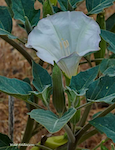
Among Friends 23 June 2021. Datura
by Walt Anderson
In this ferocious drought in Arizona, when most plants are wilted or sickly with yellow leaves or hiding as seeds in the ground, it can be a surprise to see a robust, deep-green plant with large leaves poking up out of bare soil or even a crack in a rock or the sidewalk. This is certainly one of the boldest, hardiest, and most beautiful flowers during the unforgiving “arid foresummer” that we are forced to endure until life-giving monsoon rains begin.
There are four species of Datura in Arizona, plants we may know as Sacred Datura, Jimsonweed, Thornapple, Moonflower, Indian Apple, Tolguache, Devil’s Trumpet, or perhaps something unprintable if one is under its hallucinatory influence. So let’s avoid delirium (or worse) by ingesting some facts rather than psychotropic alkaloids of this prominent member of the Solanaceae, the nightshade family.
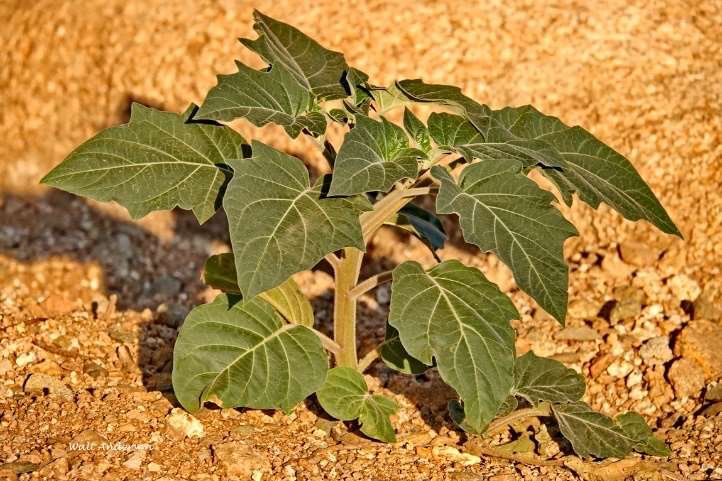
Members of the genus Datura apparently originated in Mexico and Central America, but they were introduced early to India, the Far East, and Europe. In fact, Datura is derived from a Hindu Sanskrit word for “thorn apple.” The plant has cultural significance wherever it occurs. Native Americans had many uses for the plant. Extremely toxic to humans and livestock, especially within its flowers and seeds, it also has medicinal and recreational (hallucinogenic) uses. The plant does not come with printed warnings of side effects, so it behooves you to know in advance that it can cause tachycardia (extremely rapid heart rate), hyperthermia, temporary paralysis, muscle stiffness, stupor, blindness, convulsions, and death by respiratory or cardiac failure. It has been used in love potions and witches’ brews, and in some cultures, it is considered sacred, as it brings you closer to God (if you survive or not!).
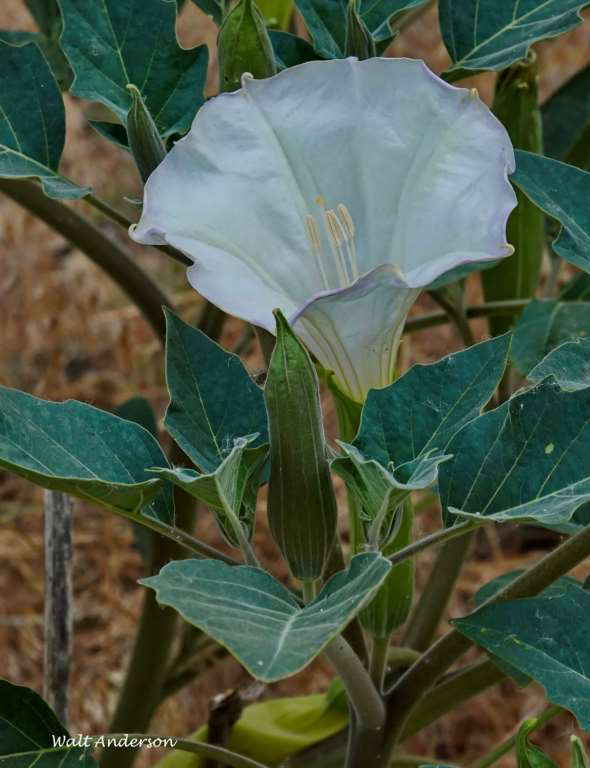
Gorgeous funnel-shaped flowers appear in the evening and last until the sun bathes and causes them to wilt them the next day. The flowers emit a heady fragrance that attracts the sphinx moths that have tongues (probosces) long enough to reach the nectaries at the base of the corolla tube. Moonflower seems a perfect name, as the blossoms appear to glow in lunar light.
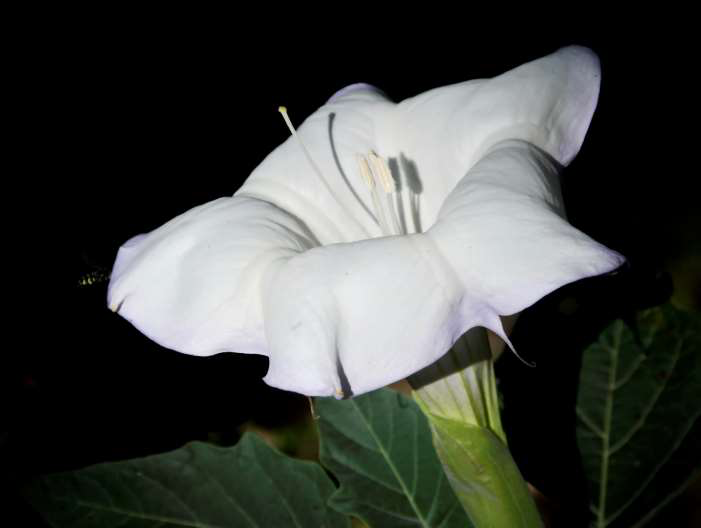
Typical flowers are snow-white with a tinge of peripheral lavender. Here you can see the pistil (female flower) towering above the five clustered stamens (male flowers). What a striking target for the sphinx moth, the ideal pollinator in a classic non-symbiotic mutualism. It’s non-symbiotic, because they don’t live together. It’s a mutualism, because both insect and plant benefit. What is perhaps less well known is that the nectar contains some of the alkaloids that are toxic to many creatures. However, the moth finds the spiked brew intoxicatingly lovely and addictive. A few sips, and its flight pattern becomes more erratic, but it stumbles back for more. Moths have been seen hovering impatiently for the blossom to open and yield its heady liquor.
Unfortunately for the moths, there is no Alkaloids Anonymous. Fortunately for the plant, the addicted moths, capable of flying 30 mph when sober, are great at taking pollen to a distant flower, no matter how impaired the stoned insects fly.
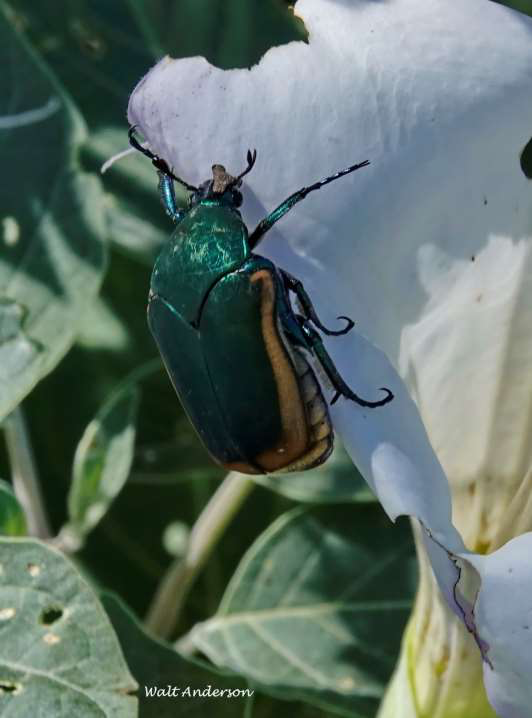
A past-its-prime flower makes a good landing platform for this colorful scarab called the Fig Beetle. A very close relative is the similar Green June Beetle (ah, if only we in Arizona could experience a green June!). These insects have large white grubs, a couple inches long, that you might dig up in your garden or planter. Don’t panic—they’re organic!

Though the alkaloids presumably evolved to deter herbivores, older flowers and leaves are often tattered, mined, and chomped mercilessly by insects that have evolved tolerance to the “nasty” (to us) but otherwise delectable (to them) nutrients. One bug’s meat is another bug’s poison. This sphinx moth caterpillar actually gains defensive toxicity from its diet of atropine, scopolamine, and hyoscyamine, just as a Monarch caterpillar does on milkweed before it transforms into a butterfly. No need to hide when you’re toxic—better to let your enemies know! The plant may suffer from the larval munching, but it gains from the pollination services of the adult.
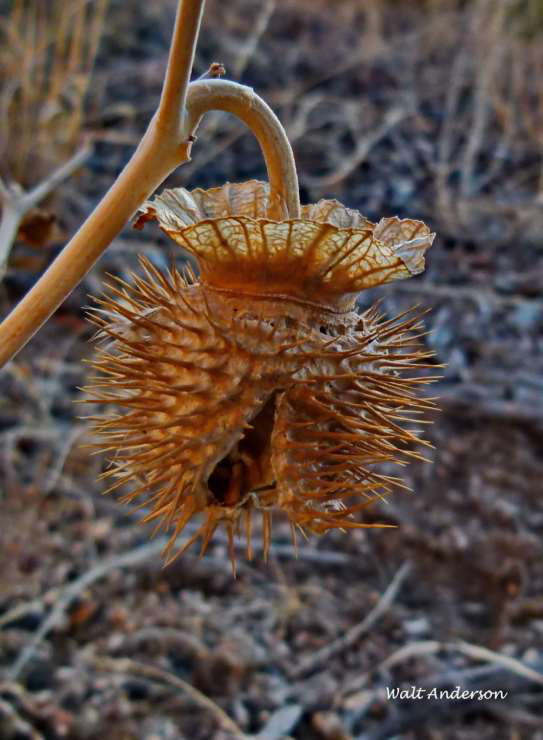
The fruit is a four-chambered capsule with defensive spines to protect the couple hundred light-brown seeds inside until they mature. Do NOT add these seeds to your granola! So many members of this family (think nightshade, tobacco) are poisonous to varying degrees, but we do eat tomatoes, potatoes, peppers, and eggplants, though some of us experience digestive distress if we do so.
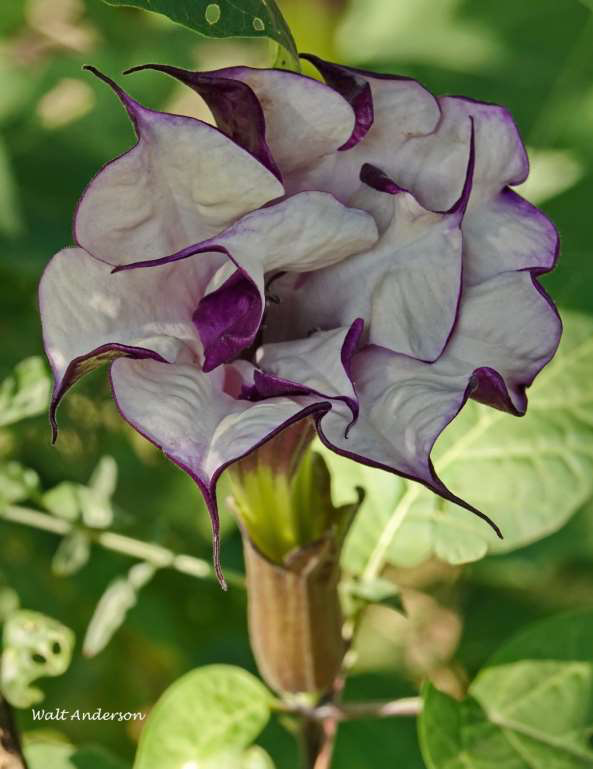
Some of the daturas like this Devil’s Trumpet are the result of artificial selection by natives of ancient Mexico and Central America. Now they are planted as ornamentals in tropical and subtropical gardens around the globe. A tree-like relative (Angel’s Trumpet), whose flowers hang downward, is very popular in places like Nairobi and Arusha in East Africa.
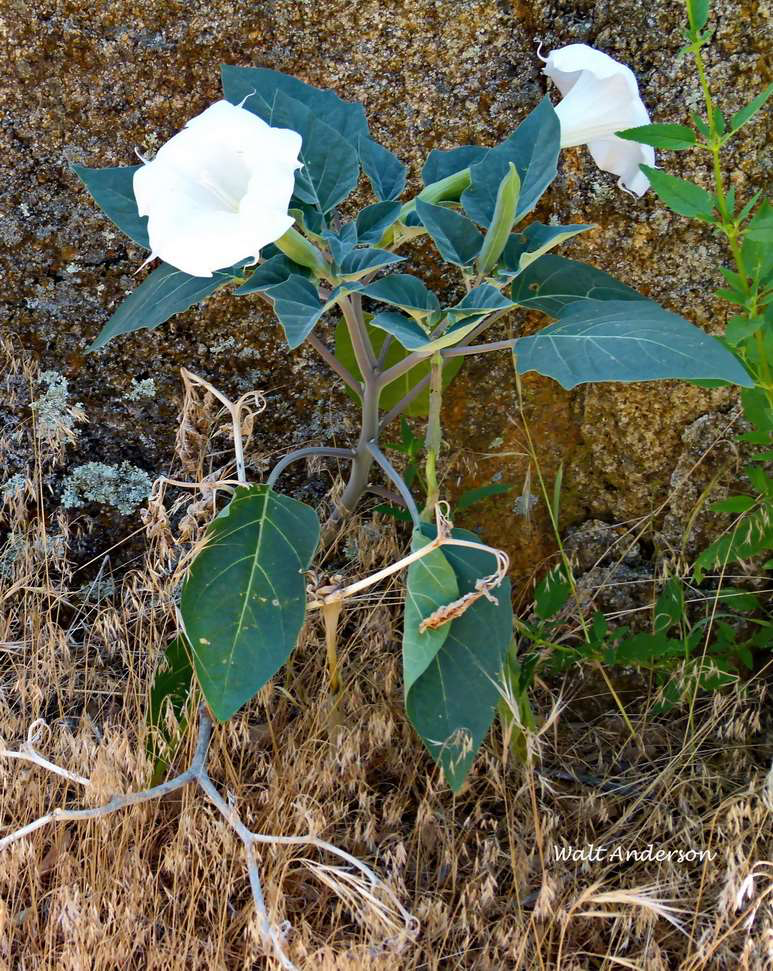
I have no desire to seek visions or crazed delirium by sampling any part of this plant, but I do admire its abilities to grow in soils that barely deserve the name and fill the night air with sweet fragrance. It’s a classic beauty that was a favorite of Georgia O’Keefe, and someday I may just have to try to capture its beauty in a painting of my own.
